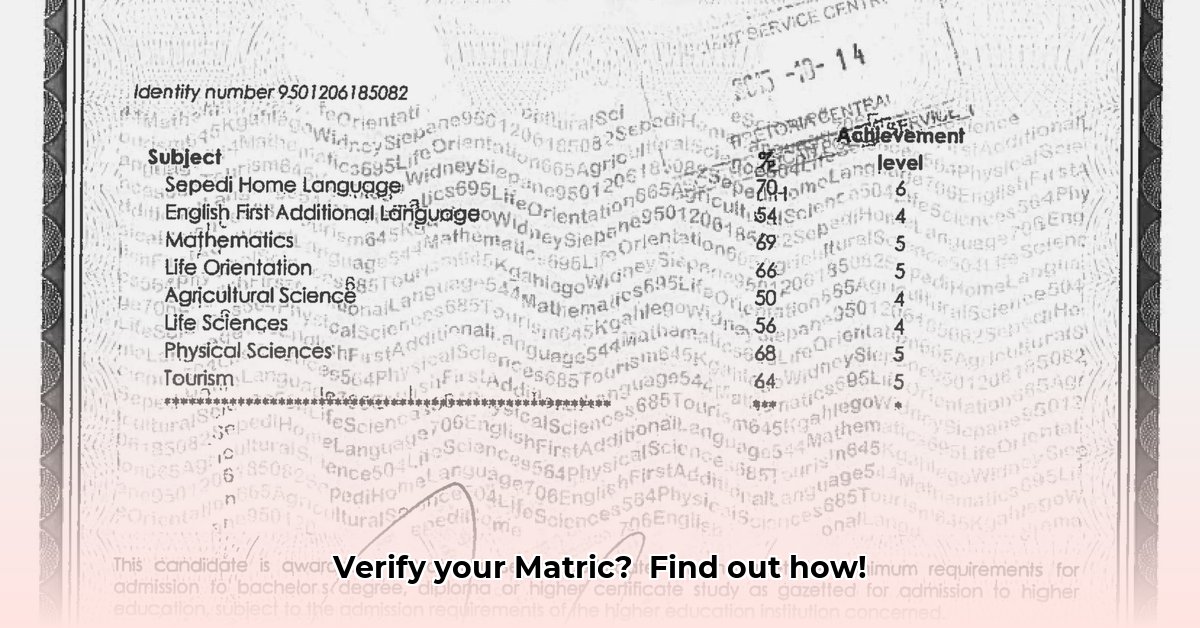
Eish, that matric certificate is serious business, isn't it? It's your ticket to varsity, jobs, and a whole lot more. But what if you need to verify it's legit, or worse, it's gone missing or damaged? Don't stress! This guide will help you check your matric certificate's authenticity and get a replacement if needed. We'll keep it simple, with easy-to-follow steps, so you can get things sorted quickly and efficiently.
Verifying Your Matric Certificate: A Step-by-Step Guide
Verifying your certificate is easier than you think. It's like checking a product's serial number – a quick way to confirm everything is on the up-and-up. Here's how:
- Locate your certificate details: Find your 12-digit certificate number and barcode on your matric certificate. Write them down– you'll need them!
- Identify the issuing body: This determines where you verify your certificate. Most post-1992 certificates are handled by Umalusi, but the Independent Examinations Board (IEB) and the South African Comprehensive Assessment Institute (SACAI) have their own systems. Check your certificate for the issuer.
- Access the verification portal: Each issuing body has its own online portal or verification method. Go directly to their official website to avoid scams.
- Enter your details: You'll need your 12-digit certificate number and barcode. They might also ask for other personal details, like your ID number. Be accurate!
- Check the results: The system should give you an instant verification result, confirming your certificate's authenticity.
Important: Be wary of phishing scams. Official verification websites are secure; always check the URL carefully.
Replacing Your Matric Certificate: A Practical Guide
Losing or damaging your certificate is frustrating, but it's fixable. Here’s how to get a replacement:
- Determine the reason: Is it lost, damaged, or are there errors needing correction? This affects the documents you'll need.
- Gather supporting documents: You'll need your ID. A police report is needed if it was lost or stolen, and an affidavit might also be required.
- Complete the application form: Find the application form on the issuing body's website (Umalusi, IEB, or SACAI). Some may still offer paper forms.
- Pay the fees: There are fees for replacements. Check the amount online beforehand.
- Submit your application: Submit your completed form, documents, and proof of payment. Keep your confirmation number for tracking.
- Track your application: Many issuing bodies have online tracking systems to monitor the process.
Did you know? Many people find the online application process easier and faster than the traditional in-person method.
Frequently Asked Questions (FAQs)
- Different issuing bodies, different processes: Yes! Umalusi, IEB, and SACAI each have their own procedures. Check your certificate for the issuer and visit their website.
- How long does it take? Verification is usually instant. Replacements take longer, depending on the issuing body and their workload. Be patient!
- What if I have problems? Contact the relevant organization directly – Umalusi, IEB, SACAI, or the Department of Basic Education. Their contact details are on their websites.
Helpful Resources and Contact Information
| Organisation | Website |
|---|---|
| Umalusi | www.umalusi.org.za |
| Independent Examinations Board (IEB) | www.ieb.co.za |
| South African Comprehensive Assessment Institute (SACAI) | www.sacai.org.za |
| Department of Basic Education | www.education.gov.za |
Remember, your matric certificate is vital. Keep it safe! Following these steps will make verification and replacement much easier. All the best!